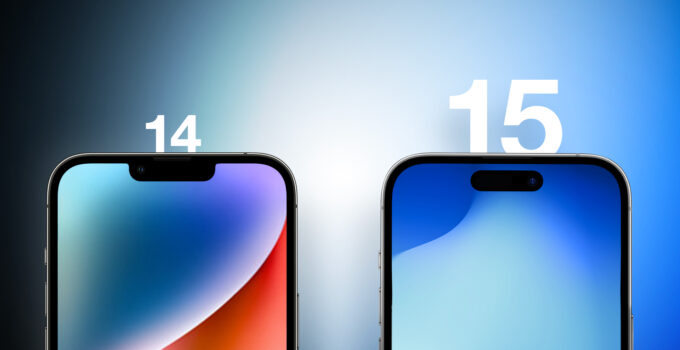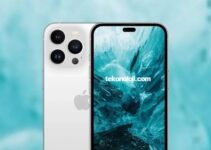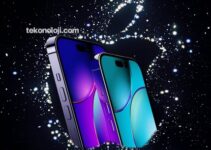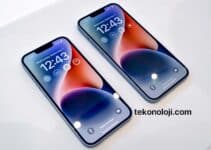iPhone 15 versus iPhone 14 comparison, which one to buy. Which iPhone do I buy now that the new model has been released? Do I choose the new model by spending what it costs or do I save and take last year’s? Years pass and technologies change but the questions of those who are preparing to buy an iPhone are always the same and we are always here ready, as happened last year when we compared the iPhone 13 and iPhone 14, to give you a hand in deciding by showing your face. See all the details of the two most recent “cheap” iPhones: iPhone 14 and iPhone 15.
10 things to try right now on macOS Sonoma
The basic concept
When comparing various generations of smartphones, the first thing to make clear is that the progress from one year to the next is decidedly incremental. In practice, there are no qualitative leaps such as to make the update unmissable if you have just purchased a model from the previous year. And this also applies to the iPhone world.
This factor, given that Apple always leaves on the market not only the iPhone from the previous year but also the one from two years before (yes: you can still buy an iPhone 13), pushes us to ask ourselves whether it is really worth spending more to buy the latest model or aim to save by buying an older one.
Theoretically, given that Macitynet has reviewed all past models, such as iPhone 12, iPhone 13 and iPhone 14, and soon also the iPhone 15, it would be enough to read our tests and make your own considerations. In reality we understand that things are not that simple, both because for obvious chronological reasons we have not been able to cross-reference and compare all the phones, and because the reviews focus on a single iPhone when instead what is needed in cases like these is to present a comparison.
In this article we will assume that the reader has a rather old iPhone and we will try to help him choose between an iPhone 14 and an iPhone 15. Ultimately we will also give some mention to the iPhone 13 which, as mentioned, is still on the market and which it must be taken into account for its proximity in terms of specifications to the iPhone 14.
Let’s start from the beginning, saying that iPhone 14 and iPhone 15 are offered in two versions: the base which has a 6.1-inch screen, the Plus which has a 6.7-inch screen. This obviously changes weights and measures, but not the design.
Above all, the technical content does not change: dimensions aside, the two models are absolutely identical. Ergonomic factor aside, therefore, every functional consideration we will make refers to both the iPhone 14 and iPhone 14 Plus and the iPhone 15 and iPhone 15 Plus.
Design
Speaking of design, Apple has accustomed us to very modest aesthetic innovations between one model and another. The last big change occurred in the leap between iPhone 11 and iPhone 12. Then for three years nothing new. With iPhone 15 the same thing still applies: a non-expert would find it difficult to distinguish an iPhone 14 from an iPhone 15. But in reality if you look at the details, the iPhone 14 and the iPhone 15 have more pronounced differences than the simple superficial appearance.
Size and colours
Let’s start with the dimensions which practically do not change between the two generations, unless you really want to use the caliber (iPhone 15 is 147.6 mm high, compared to the 146.7 mm of the iPhone 14, while the width is 71.6 mm for iPhone 15, compared to the 71.5 mm of iPhone 14; the thickness is identical) or the pharmacist’s scale (the weight is 171 grams for iPhone 15 and 172 for iPhone 14). The comparison between iPhone 15 Plus and iPhone 14 Plus is very similar.
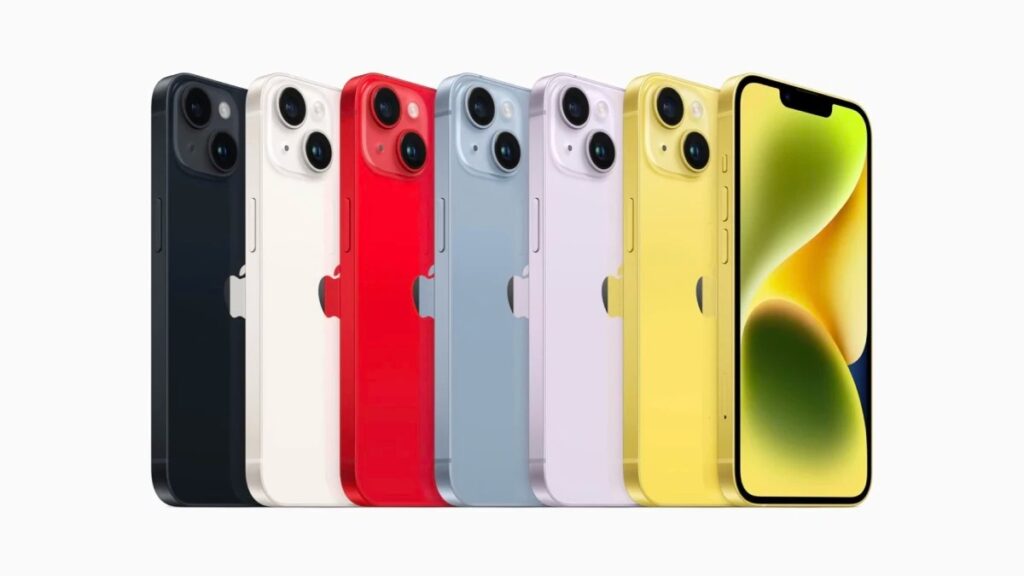
But there are actually two and a half aspects separating the two models.
- The first is the slightly rounder edges of the iPhone 15 which make the new model more comfortable to hold and give the impression of a thinner device.
- The second is the back which for the first time in iPhone 15 is made of matte glass and no longer shiny
- The… middle are the colours. The colors of the iPhone 15 (apart from black) are pastel, those of last year were decidedly more intense.
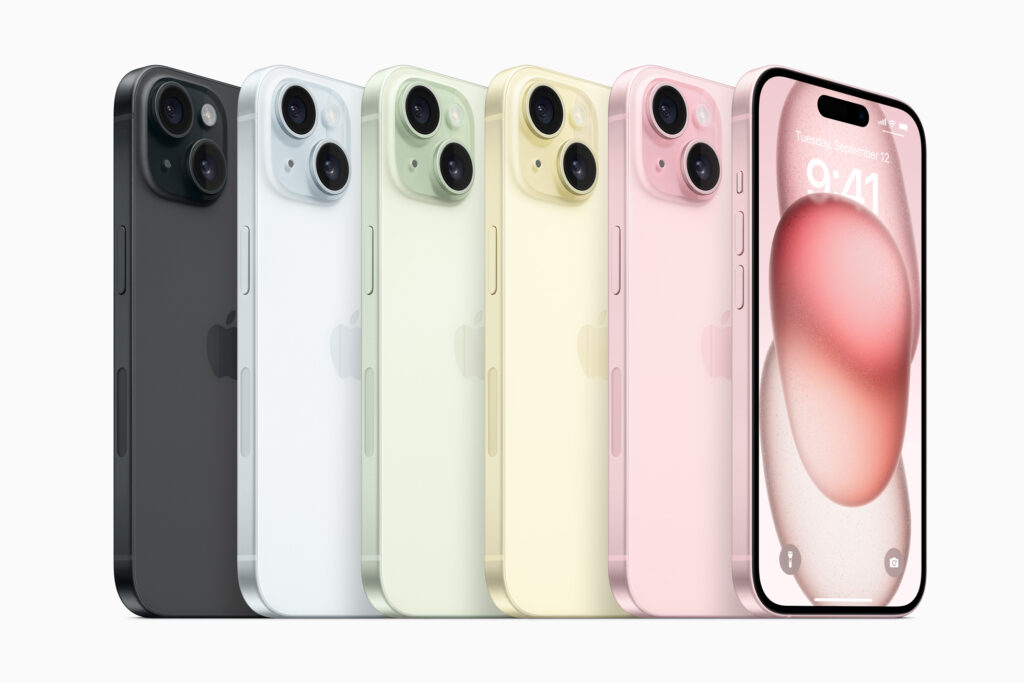
Front and back
We will say something about this below, in the screen chapter but there is no doubt that it must also be talked about in design. Looked at from the front, the iPhone 15 stands out from the iPhone 14 due to the presence of the Dynamic Island. The dynamic island that Apple introduced with the iPhone 14 Pro effectively marks the end of the historic front notch for Apple smartphones (except for a surprise review of it in an iPhone SE 4 not yet announced) and this changes the aesthetics, at least if you talk about the phone being turned on.
In addition to this, the iPhone 15 stands out from the iPhone 14 for the back which, as mentioned, is no longer made of shiny glass, a magnet for fingerprints, but of matte glass. Apple explains to us that the color is infused into the glass with a very sophisticated process. The result is a device that is more pleasant to look at and also to handle.
Technical features
The technical data sheet, which offers several similarities, this year offers some interesting and in some cases even very relevant points of difference. This is the case of the USB-C port. But let’s go in order.
Display with the island
If we start from the display, we could say that it is the same in terms of technology, but there are some differences.
It is a 6.1-inch diagonal Super Retina XDR unit for both, with some slight difference in resolution, due to the reduction of the bezels. For iPhone 15 we are talking about 2532×1170 for iPhone 14 and 2556×1179 with 460 ppi on iPhone 15. As for iPhone 15 Plus we have a 2796×1290 screen versus 2556X117
Both screens support True Tone, wide P3 color gamut, but with different peak brightness: 800 nits on iPhone 14 and 1000 on iPhone 15. iPhone 15 reaches 1500 nits for HDR content, while iPhone 14 stops at 1200. Furthermore, outdoors, iPhone 15 can reach a peak brightness of 2000 nits. On last year’s model this specification was not declared.
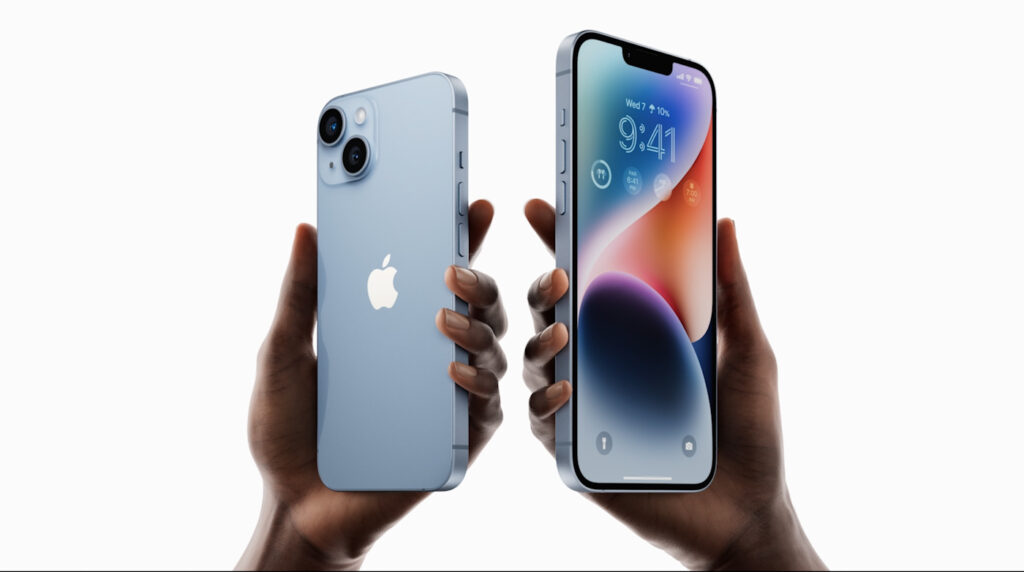
In practice, iPhone 15 has a screen that is better read in bright light
It should also be noted that the iPhone 15, like the iPhone 14, does not have the 120Hz LTPO screen of the iPhone 14 Pro and iPhone 15 Pro. The standard model in fact maintains the 60Hz refresh display of the iPhone 14 and there is no always screen function on the current iPhone 14 Pro. This function in fact requires a screen capable of having a variable refresh rate, from 120Hz to 1Hz, which the iPhone 15 does not have.
In practice, the speed at which the images scroll when you “scroll” the screen remains the same.
That said, the iPhone 15 screen also changes due to the drop of the notch in place of which the Dynamic Island appears.
This is a major update for the iPhone 15, perhaps the most important with the USB-C port which we will talk about below, of the 2023 generation.
The dynamic island is not only an aesthetic modification, but also a functional one. This black cutout can expand depending on which apps are running. Among the many functions, Dynamic Island shows incoming calls, connected AirPods, Face ID, Apple Pay, CarKey, AirDrop, low battery, charging, silent ON/OFF switch, NFC interactions, AirPlay, Focus mode changes, Shortcuts, airplane mode, alerts related to the SIM card, connected accessories, Where is.
Furthermore, Dynamic Island allows you to show the ongoing call, SharePlay, playback apps, timers, Apple Maps directions, voice memos, screen recording, personal hotspot, active microphone and camera indicator, sporting event results and so on. he has more than that.
Furthermore, the fact that the island is finally available on a standard model, therefore it will be in the hands of a greater number of users than in the past, will push developers to use it more and more.
In short: the Dynamic Island represents added value in the present, but we are convinced that it will give its best in the coming months.
Processors, different but not too much
Here too, there are differences compared to last year. While the iPhone 14 and 13 shared the same CPU, the iPhone 15 makes the leap in quality, offering the A16 chip used by the iPhone 14 Pro last year.
The standard iPhone 14 models, in fact, use the A15 Bionic chip, with a 6-core CPU, with 2 performance cores and 4 efficiency cores. The A16 chip also offers a 6-core CPU, a 5-core GPU and a 16-core Neural Engine.
Percentage wise the difference is important. On average we are talking about about 15% more in terms of performance. In reality, it is likely that in order to be able to clearly and immediately appreciate the step, you will have to resort to the games and new computational photography features that the iPhone 14 is equipped with.
In daily use, however, it will be difficult to perceive the improvement in performance using an iPhone 14 and an iPhone 14 Plus and an iPhone 15 and an iPhone 15 Plus. Not due to the demerit of the A16 processor, but because the A15 Bionic is still a very powerful processor.
Photography
In the photography sector the aesthetics are identical (usual two rear lenses) but it is perhaps here that things change the most because a 48 megapixel main sensor arrives on the iPhone 15 and iPhone 15 Plus which can do things that the iPhone 14 cannot. able to do.
First, the iPhone 14 takes photos at 12 megapixels, the iPhone 15 and iPhone 15 Plus take photos at 24 megapixels. This allows you to have images that can be cut out more easily and with greater quality.
The main camera of the iPhone 15 also offers an additional 2x telephoto option not present on the iPhone 14. Even if it is a crop (a cutout) of the central part of the sensor because there is no dedicated lens, in the end the new model allows you to shoot with three focal lengths (0.5x, 1x, 2x).
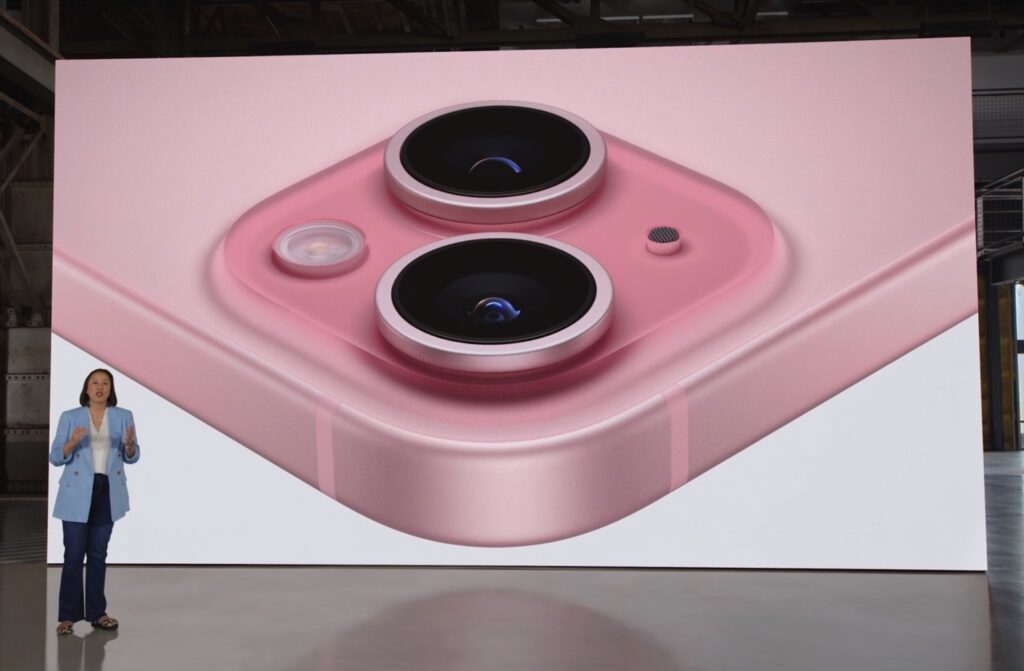
The photographic quality has also improved thanks to the “hybrid” lenses. This technology, used until recently only by some Xiaomi smartphone models sold in China, involves the use of one glass lens and six plastic ones.
The combination of all this, an aperture of ƒ/1.6, hybrid technology and the new sensor, allows you to capture up to 20% more light than what the iPhone 14 Pro is capable of. iPhone 15 also offers fast shots higher shutter speed, better colors and greater separation of the subject from the background.
The automatic portrait mode
iPhone 15 has a new feature that allows you to capture portrait images automatically. In practice you point, you shoot and if there is a subject (man, cat, dog) recognized by the system and at the right distance, iPhone takes a photo which can subsequently be transformed into a portrait without selecting the specific mode. This mode is not present on the iPhone 14 which, in addition to the rest, takes portraits that are even less precise in the contours when it blurs the background.
Front camera
The front camera is identical between iPhone 14 and iPhone 15. It is a 12 MP TrueDepth camera. The difference is only on the Smart HDR mode, version 5 on iPhone 15 and version 4 on iPhone 14.
However, the video recording capabilities of the front camera remain unchanged between the two models: HD video recording (1080p) at 25 fps, 30 fps or 60 fps, Cinema Mode up to 4K HDR at 30 fps, HDR video recording with Dolby Vision up to 4K at 60 fps, Slow-motion video (1080p) at 120 fps, Video QuickTake and cinema-quality video stabilization (4K, 1080p and 720p).
USB-C
One of the biggest news of the year in the iPhone field is the replacement of the historic 15 Lightning port replaced with a USB-C. Apple took this decision following the final approval of the Union directive on the single or universal USB-C charger which is effectively imposed on Apple.
Having a standard cable, which perhaps will be used for other devices and being able to connect various accessories is certainly an additional convenience but otherwise things change little. What does not change is the data transfer speed with cable. iPhone 15 remains anchored at the same speed of 480 Mbps as the iPhone 14.
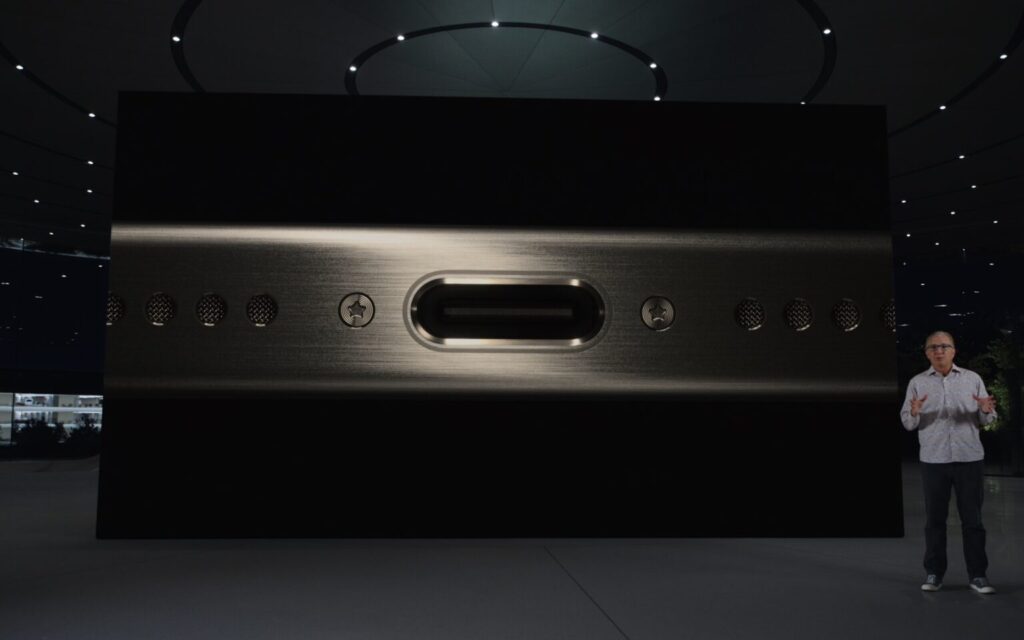
The charging speed is also identical between the two models: up to 50% charge in 30 minutes with a 20W power supply.
In this sense, having a USB-C port like that of the iPhone 15 must currently be seen more as an insurance policy on the aging of the device. In the future we will have accessories (above all) and functions linked to the presence of the USB-C port that cannot be used by the iPhone 14.
Other news
iPhone 15 also has smaller innovations that make it different from iPhone 14.
Wireless charging
If you consider wireless, the iPhone 14 continues to have 15W charging when using a MagSafe charger or 7.5W when using a normal Qi charger. However, the iPhone 14 like the iPhone 15 Pro should be the first phones in the world certified for the new Qi2 technology, a standard to which Apple has contributed for the management of the magnetic rings that derive from those of MagSafe.
It is possible (although not certain) that when the Qi2 specification is released, iPhone 15 and iPhone 15 Plus will be able to charge at 15W even with non-Magsafe chargers.
iPhone 14 continues to remain stuck to charging at 15W only with Magsafe and at 7.5W using a third-party charger, not certified by Magsafe.
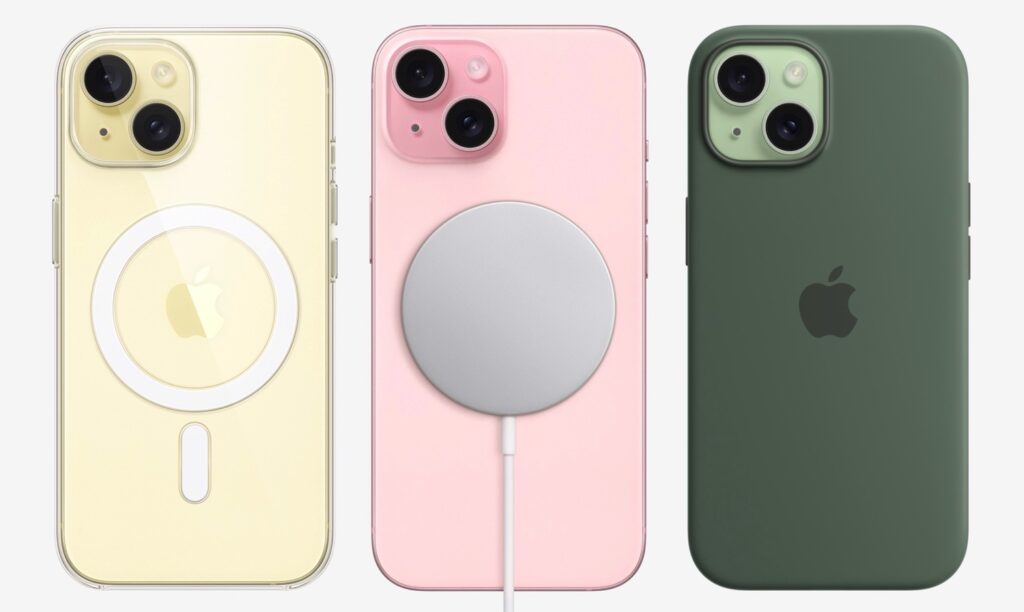
Wideband
Another difference is the presence of the second generation Ultra Wideband chip on the iPhone 15, while the first generation one is present on the 14.
The first generation of this chip dates back to 2019 with the iPhone 11 Pro, with the second generation further improving location capabilities for the Apple Find My app, as well as improving all apps that take advantage of this precision location technology.
Among the other functions that iPhone 15 is capable of thanks to UWB 2 is the precise positioning of our friends who use iPhone 15 or iPhone 15 Pro or possibly even Apple Watch 9 or Apple Watch Ultra 2.
What doesn’t change?
There are many things that do not change between iPhone 14 and iPhone 15 in their basic or Plus versions. Let’s see the main ones below
- Battery life reaches 20 hours of video playback (26 for Plus models), 16 hours of streaming video (20 for Plus) and 80 hours of audio (100 for iPlus).
- Both iPhones offer support for the satellite emergency call system. This allows you to send messages in areas where there is no reception, so you can ask for help in truly extreme situations.
- Both iPhone 14 and iPhone 15 both have support for the Accident Detection function which allows you to detect road accidents and send emergency calls and messages.
- Ceramic Shield glass front on both models
- same 5G connectivity that Apple calls “ultra-fast”
- same water resistance (maximum depth of 6 meters up to 30 minutes)
- same memory sizes available (128, 256 and 512 GB)
Which iPhone to choose between iPhone 15 and iPhone 14
Let’s get to the question that interests us most: which one to choose between iPhone 15 and iPhone 14?
Let’s start with a premise. This year the differences between iPhone 15 and iPhone 14 are more marked than those last year between iPhone 13 and iPhone 14. Dynamic Island, above all, is a feature that alone could make the difference. Added to this is the processor, improvements to the rear cameras and the new, more practical USB-C connector (although not faster than Lightning). And finally the camera also has several plus points.
Why choose iPhone 15?
Technically, the iPhone 15 is one step higher than the iPhone 14, a step that manifests itself in various aspects of daily use. The same thing could not be said in last year’s comparison between the iPhone 13 and the iPhone 14. For this reason, at the prices of today, with a difference of €100, we recommend iPhone 15 compared to iPhone 14.
The advantage of having the Dynamic Island, the USB-C port are fundamental in terms of the aging of the device. Add to this the camera which is finally making decisive progress and you will understand that the 100 euros of diversity are fully justified.
Why choose iPhone 14?
The choice should fall on iPhone 14 or iPhone 14 Plus, obviously, if the proposed innovations whose meaning we have just explained to you do not interest you. But a fundamental factor will also be the price.
The Apple price list shows a marginal difference between the two models: it starts from 979 euros for the iPhone 15 and 879 euros for the iPhone 14. The decision to maintain such a small margin between the two products is, in practice, clearly an attempt not to erode the new model market.
In reality, the Apple price list is different from the prices you can find in reality. Already on Amazon, the previous model costs around fifty euros less, and can also be purchased in 5 interest-free instalments. On eBay, iPhone 14 often goes for even lower prices.
When the price difference between iPhone 15 and iPhone 14 reaches 150 euros, then last year’s model becomes a serious contender. It may not be difficult to see such a difference even if we are certain that the iPhone 15 will soon also begin to be discounted.
The third wheel: why choose iPhone 13
The iPhone 13 also comes into this calculation. It should not be forgotten that this model released in 2021 is still on the market at a very interesting price: 220 euros less than the iPhone 15. We have dedicated a review to it and also a direct comparison with the iPhone 14 which we recommend you read.
You will understand that the differences between iPhone 13 and iPhone 15 are there and are important but not more important than those between iPhone 14 and iPhone 15. Find a cross between the differences between the various models below.
In practice there are no differences in daily use between iPhone 13 and iPhone 14.
Under these conditions and at these prices, iPhone 13 becomes a serious contender to iPhone 14 in the carousel of choice between the various models. In our opinion, the iPhone 14 costs more, 120 euros, and is worth much less than the price difference with the iPhone 13.
One could object to the obsolescence factor; having been released a year before iPhone 14, it is likely that it will be discontinued in support a year earlier, but in reality it is something so distant in time as to be an almost irrelevant factor in the purchase nowadays.

Where to buy?
Yes iPhone 13, iPhone 14 and iPhone 15 can be purchased on the Apple Store and in authorized Apple stores. But before buying directly from Apple it is always better to check online where these entry-level models are often heavily discounted, much more than the Pro models. For example, the iPhone 14 was discounted by Amazon constantly at around 15% and often even over 20%.
Currently, just to give an example, you can find a discount of almost 10% on the iPhone 14. In recent days, small discounts have been presented, in the order of 5% on the iPhone 15. iPhone 13 just a few days ago in the 128 GB version it dropped to 699.
In the next few days, as soon as the availability of the new generation iPhones has normalized, the discounts will certainly increase and that will be the most appropriate time to cross-reference prices and hunt for the best possible deal.
